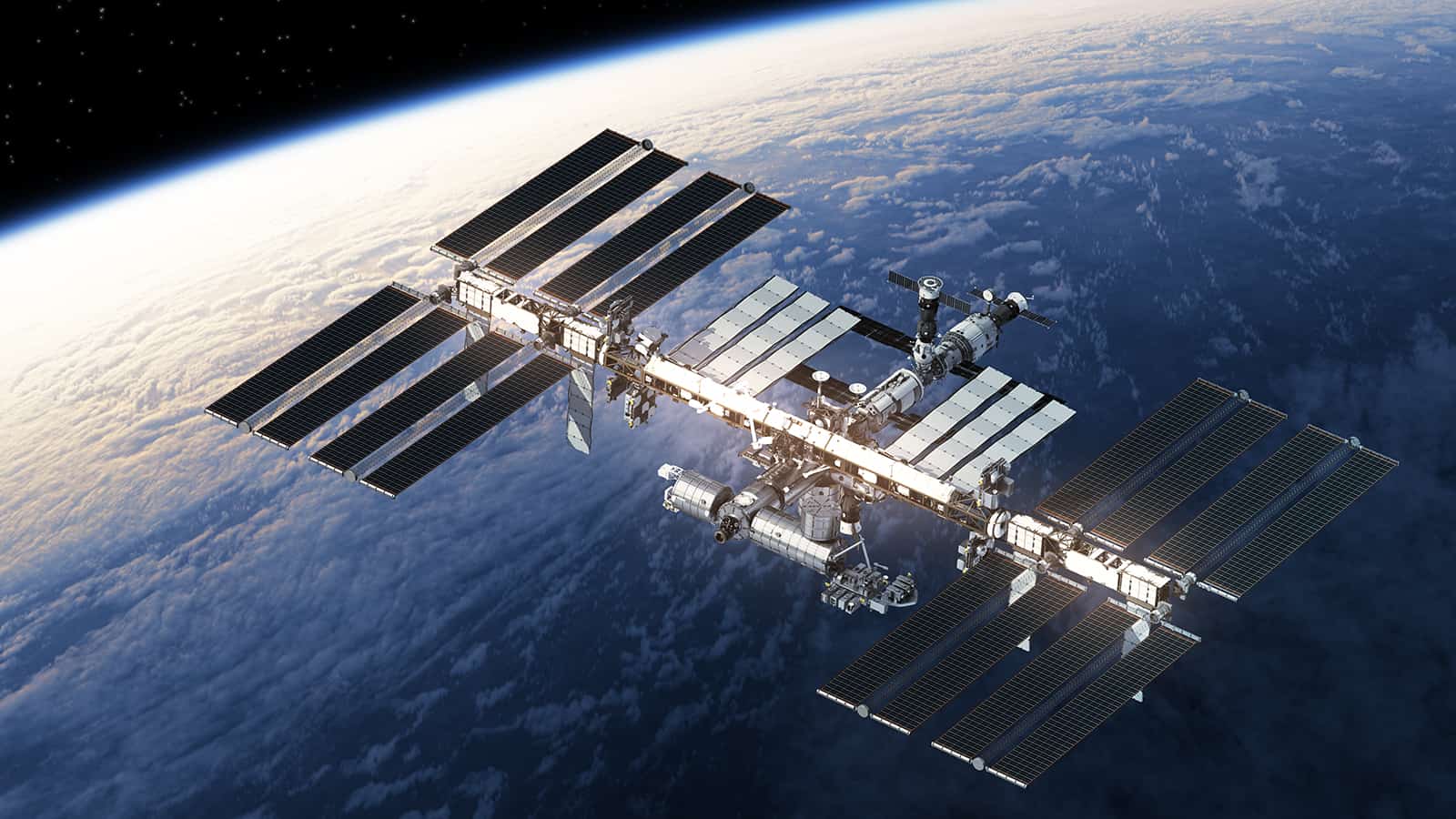NASA will keep the International Space Station in operation until 2030. Then the space agency will crash it into the Pacific Ocean. The structure will plunge into a desolate area called Point Nemo. The site is about 3,000 miles from New Zealand’s east coast and 2,000 miles north of Antarctica. It’s an ideal location since this point in the ocean is farthest from any landmasses.
NASA said that commercially owned and operated space stations would replace the ISS to continue collaboration and research. Astronauts have lived and worked on the ISS for over 20 years, orbiting nearly 250 miles above Earth’s surface. More than 200 astronauts from 19 countries worldwide have enjoyed space exploration thanks to the International Space Station.
Since the space station can’t withstand the effects of harsh space conditions indefinitely, NASA originally planned to decommission it in 2024. Scientists designed the station with a life expectancy of 15 years with a safety factor of two, meaning it could endure a maximum of 30 years after its launch in 1998.
However, Boeing certified the U.S. portions of the International Space Station through 2028 (30 years), and NASA believes an extension to 2030 is possible. Of course, a looming question the agency must consider is whether commercial destinations will be available in time to avoid a substantial gap in access to low Earth orbit.
Challenges Aboard the International Space Station

Currently, the space station faces myriad challenges from its exposure to elements in space. Ionizing radiation, significant temperature fluctuations, structural loading pressures such as docking and undocking of vehicles, and the threats of meteoroids and orbital debris all challenge the Station’s structure.
Also, NASA recently discovered air leaks and cracks in the Station’s Service Module Transfer Tunnel. This connects the Service Module to eight docking areas on the International Space Station. While models suggest the gaps shouldn’t exist, possible causes of the leaks may include structural fatigue, internal or external damage, and material defects.
This discovery warrants an updated analysis of the structural integrity and lifespan of other space station areas. So, the International Space Station may retire earlier than expected due to the numerous pressures it faces.
The Future of the International Space Station (ISS)
At the end of 2021, Congress granted NASA $17 million to replace the ISS with a private-sector solution. However, NASA says that it needs $150 million to carry out the decommissioning and restructuring of ISS. Indeed, it’s essential to have a research lab in low Earth orbit to continue deep space exploration missions.
In fact, a report by NASA’s Office of the Inspector General said this: “The Artemis mission, aimed at returning humans to the Moon and ultimately landing astronauts on Mars, is not feasible without continued human health research and technology demonstrations being conducted on the ISS and its eventual replacement. As long as humans intend to travel in space, NASA expects research and testing will be needed in the microgravity environment of low Earth orbit.”
Luckily, several commercial space companies have developed strategies to replace ISS. One Houston-based company called Axiom Space offered new infrastructure for space tourism and exploration for a lower price. NASA recently approved the company’s first space station crew for a mission to the ISS. Their mission will launch on March 30.
The Private Sector Companies Stepping into the Space Race
So far, NASA has signed agreements with three U.S. companies to develop commercial space stations in low Earth orbit. The companies include Blue Origin and Sierra Space, Northrop Grumman Systems Corporation, and Nanoracks LLC. In total, NASA will grant them $415 million to split amongst themselves to develop their space station concepts.
The companies plan to have their stations in operation by the late 2020s. Of course, that timing would coincide with the planned decommissioning of ISS.
“NASA seeks to maintain an uninterrupted U.S. presence in low-Earth orbit by transitioning from the International Space Station to other platforms,” NASA said in a press release. “These awards will stimulate U.S. private sector development of commercial, independent space stations that will be available to both government and private-sector customers.”
NASA’s Plans For the Next Decade
Of course, NASA will keep itself quite busy in the next decade before ISS retires. The agency will continue research for long-duration missions to the moon and Mars, including health risk mitigation and technology development. However, the space agency says it may need to delay launches for deep space missions as the research won’t be complete by 2030.
“The International Space Station is entering its third and most productive decade as a groundbreaking scientific platform in microgravity,” said Robyn Gatens, director of the International Space Station at NASA Headquarters.
“This third decade is one of results, building on our successful global partnership to verify exploration and human research technologies to support deep space exploration, continue to return medical and environmental benefits to humanity, and lay the groundwork for a commercial future in low-Earth orbit. We look forward to maximizing these returns from the space station through 2030 while planning for transition to commercial space destinations that will follow.”
We’re living in fascinating times as we further our quest to travel through space and hopefully discover more inhabitable planets. As the International Space Station nears its retirement, other space companies have agreed to design low-Earth orbit space stations.
However, decommissioning and deorbiting the ISS will require vast resources and cooperation from many countries. NASA estimates that the overall cost of this process will total $1 billion, and each international partner will chip in.

Final Thoughts on NASA Retiring the International Space Station
Many scientific breakthroughs have been made aboard the International Space Station. In 2014, a 3D printer manufactured the first 3D printed object in space, a printhead faceplate. In 2016, NASA astronaut Kate Rubins sequenced DNA in space for the first time. And NASA’s Cold Atom Lab created the fifth state of matter, called a Bose-Einstein condensate, on the ISS in 2018.
Astronauts have also learned how to grow crops like lettuce, leafy greens, radishes, and chilis in space. This knowledge could someday help astronauts supply their food during missions. As other companies build space stations, it’s exciting to think about the scientific firsts that will occur in the future.


















